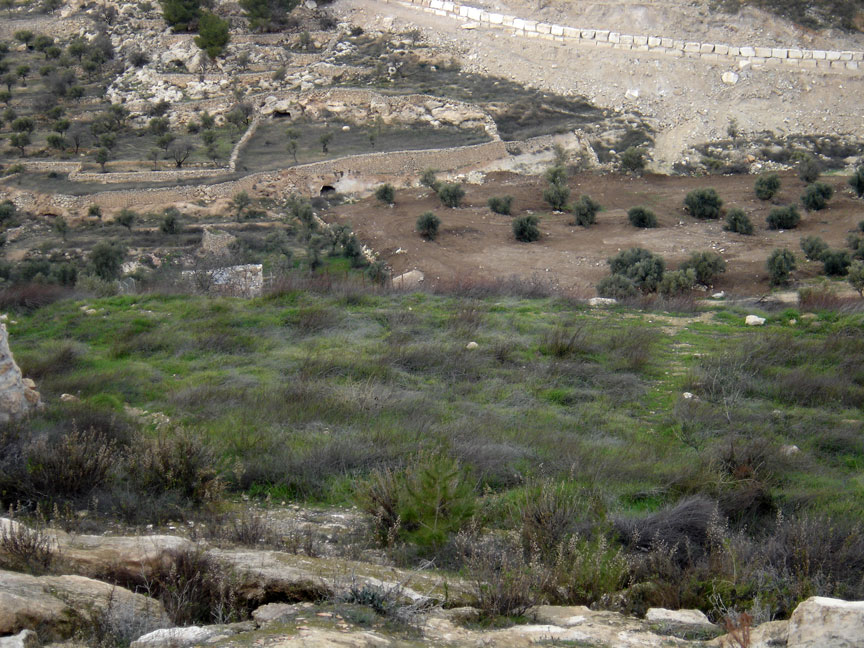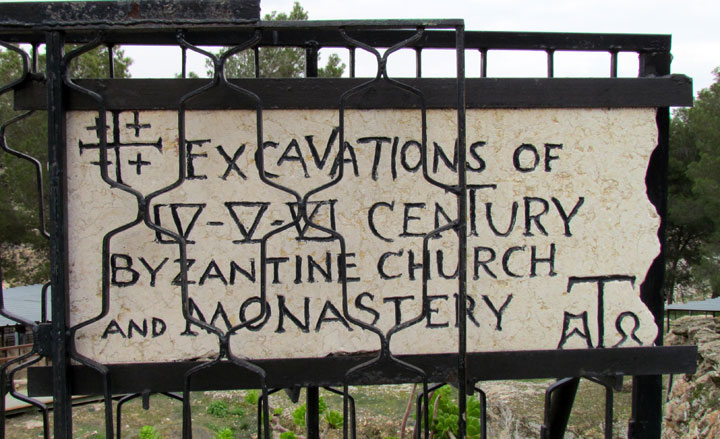

Bethlehem 2011
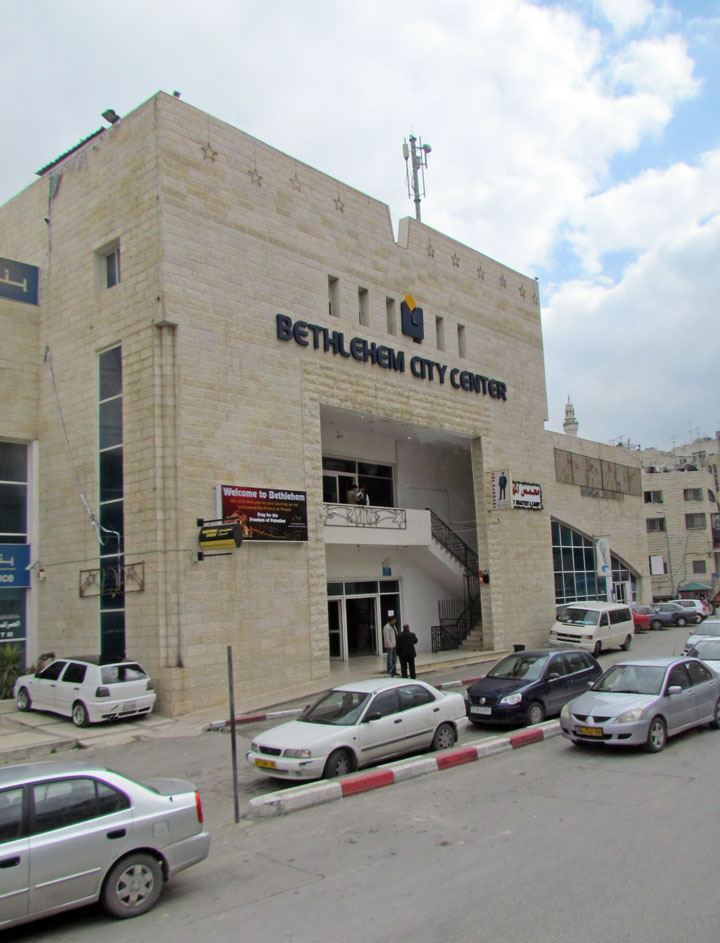
City Center
Bethlehem (Arabic: بَيْتِ لَحْمٍ, lit "House of Meat"; Hebrew: בֵּית לֶחֶם, Beit Leḥm or Modern Hebrew Beyt Lehem, lit "House of Bread;" Greek: Βηθλεέμ Bethleém) is a Palestinian city in the central West Bank, approximately 8 kilometers (5 mi) south of Jerusalem, with a population of about 30,000 people. It is the capital of the Bethlehem Governorate of the Palestinian National Authority and a hub of Palestinian culture and tourism. The Hebrew Bible identifies Beit Lehem as the city David was from and the location where he was crowned as the king of Israel. The New Testament Gospels of Matthew and Luke identify Bethlehem as the birthplace of Jesus of Nazareth. The town is inhabited by one of the oldest Christian communities in the world, though the size of the community has shrunk due to emigration.
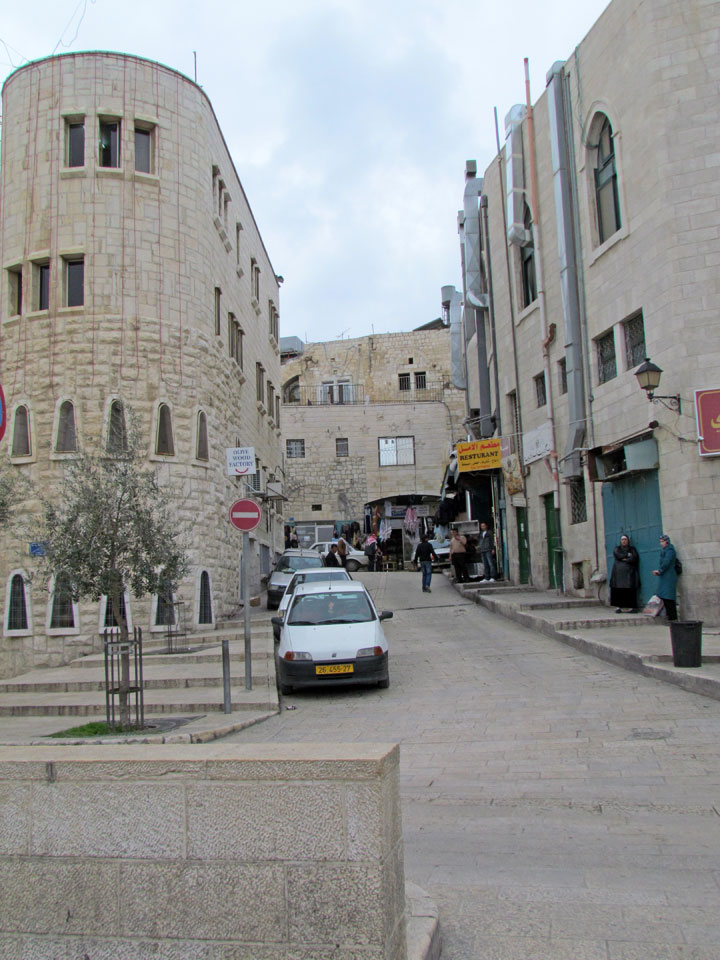
The city was sacked by the Samaritans in 529 AD, during their revolt, but was
rebuilt by the Byzantine emperor Justinian I. Bethlehem was conquered by the
Arab Caliphate of 'Umar ibn al-Khattāb in 637, who guaranteed safety for the
city's religious shrines. In 1099, Crusaders captured and fortified Bethlehem
and replaced its Greek Orthodox clergy with a Latin one. The Latin clergy were
expelled after the city was captured by Saladin, the sultan of Egypt and Syria.
With the coming of the Mamluks in 1250, the city's walls were demolished, and
were subsequently rebuilt during the rule of the Ottoman Empire.
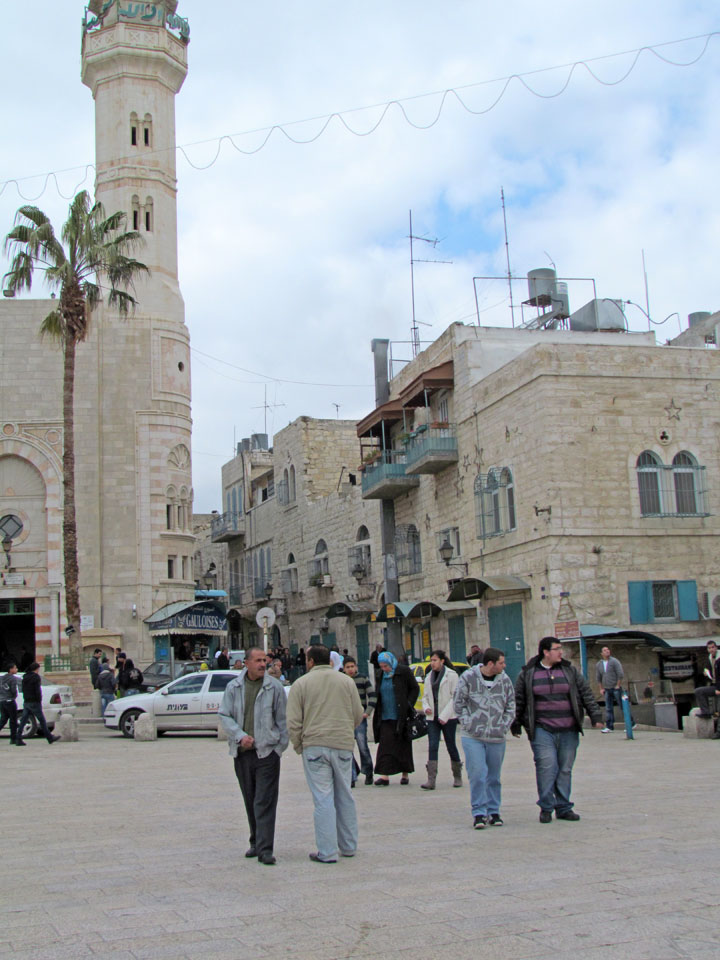
The British wrested control of the city from the Ottomans during World War I and
it was to be included in an international zone under the 1947 United Nations
Partition Plan for Palestine. Jordan annexed the city in the 1948 Arab-Israeli
War. It was occupied by Israel in the 1967 Six-Day War. Since 1995, Bethlehem
has been governed by the Palestinian National Authority.

Bethlehem has a Muslim majority, but is also home to one of the largest
Palestinian Christian communities. The Bethlehem agglomeration includes the
towns of Beit Jala and Beit Sahour, as well as the refugee camps of 'Aida and
Azza. Bethlehem's chief economic sector is tourism which peaks during the
Christmas season when Christian pilgrims throng to the Church of the Nativity.
Bethlehem has over thirty hotels and three hundred handicraft work shops.
Rachel's Tomb, an important Jewish holy site, is located at the northern
entrance of Bethlehem.
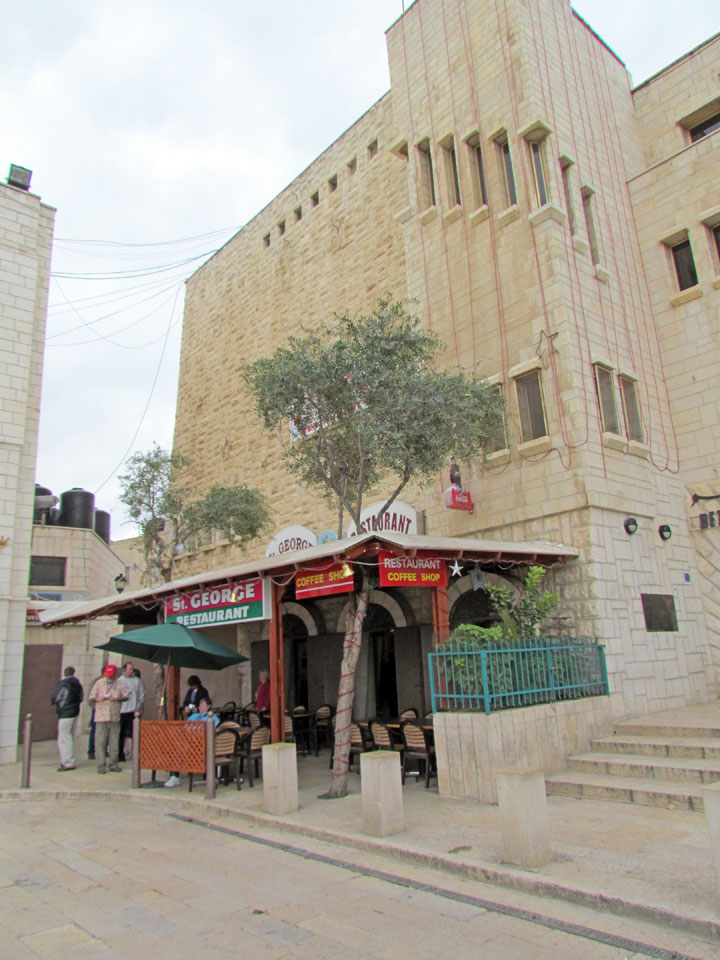
The first historical reference to the town appears in the Amarna Letters (c.
1400 BC) when the King of Jerusalem appeals to his overlord, the King of Egypt,
for help in retaking "Bit-Lahmi" in the wake of disturbances by the Apiru. Since
the Jews and Arabs had not yet arrived in the area it is thought that the
similarity of this name to its modern forms indicates that this was a settlement
of Canaanites who shared a Semitic cultural and linguistic heritage with the
later arrivals.

Bethlehem, located in the "hill country" of Judah, may be the same as the
Biblical Ephrath, which means "fertile", as there is a reference to it in the
Book of Micah as Bethlehem Ephratah. It is also known as Beth-Lehem Judah, and
"a city of David". It is first mentioned in the Tanakh and the Bible as the
place where the Abrahamic matriarch Rachel died and was buried "by the wayside"
(Gen. 48:7). Rachel's Tomb, the traditional grave site, stands at the entrance
to Bethlehem. According to the Book of Ruth, the valley to the east is where
Ruth of Moab gleaned the fields and returned to town with Naomi. Bethlehem is
the traditional birthplace of David, the second king of Israel, and the place
where he was anointed king by Samuel. It was from the well of Bethlehem that
three of his warriors brought him water when he was hiding in the cave of
Adullam.
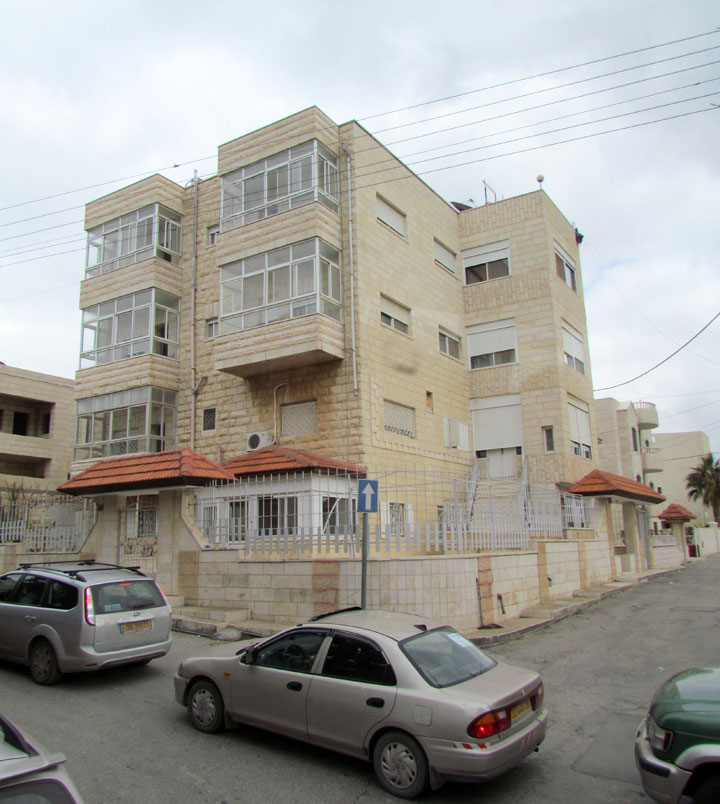
Between 132–135 the city was occupied by the Romans after its capture during the
Bar Kokhba Revolt. Its Jewish residents were expelled by the military orders of
Hadrian. While ruling Bethlehem, the Romans built a shrine to the mythical Greek
cult figure Adonis on the site of the Nativity. A church was erected in 326,
when Helena, the mother of the first Byzantine emperor Constantine, visited
Bethlehem.
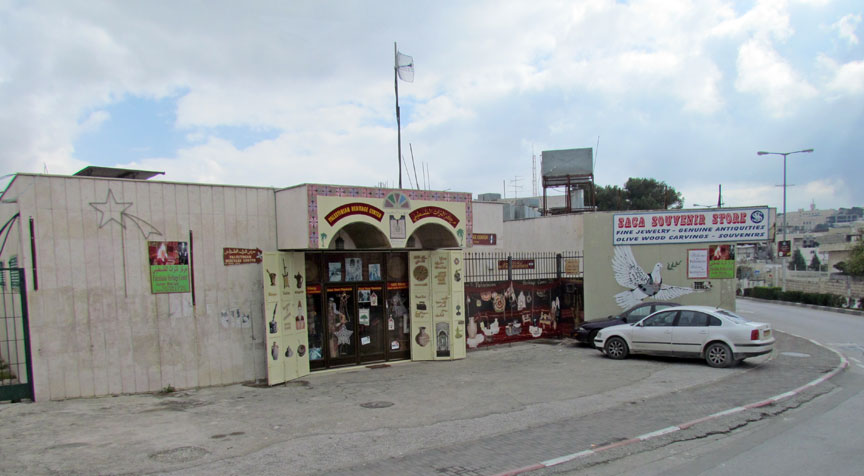
During the Samaritan revolt of 529, Bethlehem was sacked and its walls and the
Church of the Nativity destroyed, but they were soon rebuilt on the orders of
the Emperor Justinian I. In 614, the Persian Sassanid Empire invaded Palestine
and captured Bethlehem. A story recounted in later sources holds that they
refrained from destroying the church on seeing the magi depicted in Persian
clothing in a mosaic.

Two accounts in the New Testament describe Jesus as born in Bethlehem. According to the Gospel of Luke, Jesus' parents lived in Nazareth but traveled to Bethlehem for the census of AD 6, and Jesus was born there before the family returned to Nazareth.
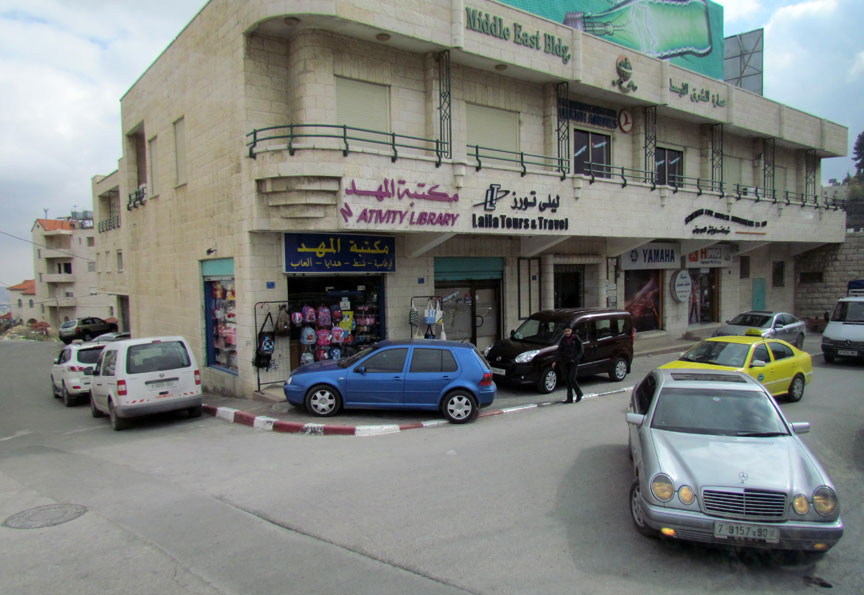
The Gospel of Matthew account implies that the family already lived in Bethlehem
when Jesus was born, and later moved to Nazareth. Matthew reports that Herod the
Great, told that a 'King of the Jews' has been born in Bethlehem, ordered the
killing of all the children aged two and under in the town and surrounding
areas. Jesus' earthly father Joseph is warned of this in a dream, and the family
escapes this fate by fleeing to Egypt and returning only after Herod has died.
But being warned in another dream not to return to Judea, Joseph withdraws the
family to Galilee, and goes to live in Nazareth.
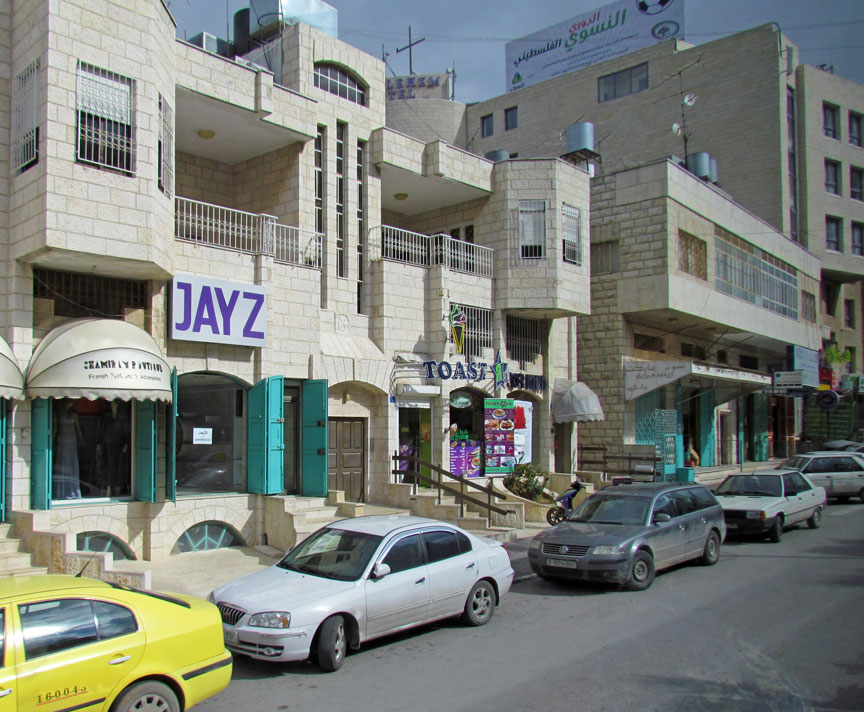
Early Christians interpreted a verse in the Book of Micah as a prophecy of the
birth of the Messiah in Bethlehem. Many modern scholars question whether Jesus
was really born in Bethlehem, and suggest that the different Gospel accounts
were invented to present the birth of Jesus as fulfillment of prophecy and imply
a connection to the lineage of King David. The Gospel of Mark and the Gospel of
John do not include a nativity narrative or any hint that Jesus was born in
Bethlehem, and refer to him only as being from Nazareth. In a 2005 article in
Archaeology magazine, archaeologist Aviram Oshri pointed to the absence of
evidence of settlement of the area at the time when Jesus was born, and
postulates that Jesus was born in Bethlehem of Galilee. Opposing him, Jerome
Murphy-O’Connor argues for the traditional position.
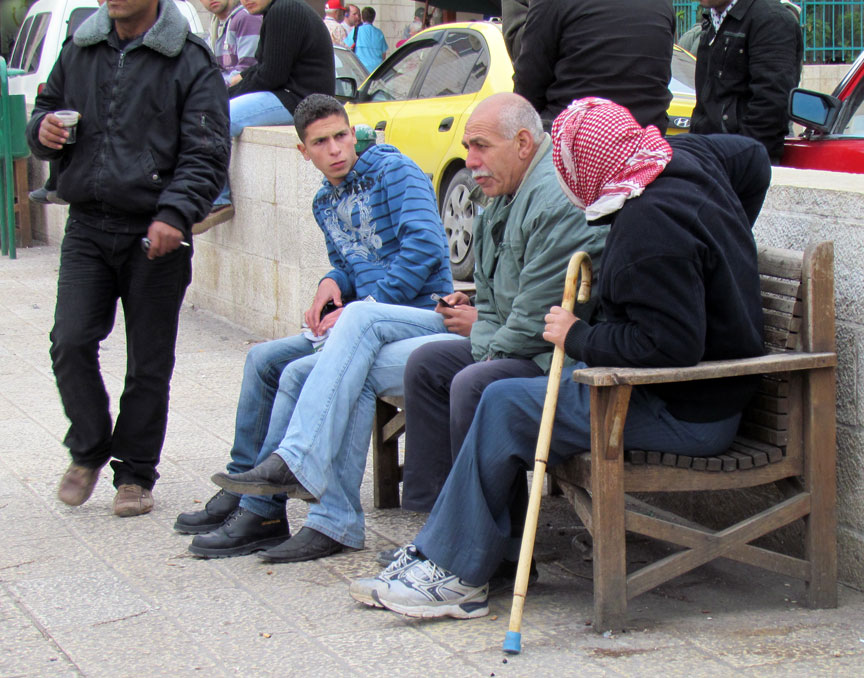
The existence of early traditions of Jesus' birth in Bethlehem is attested by
the Christian apologist Justin Martyr, who stated in his Dialogue with Trypho
(c. 155–161) that the Holy Family had taken refuge in a cave outside of the
town. Origen of Alexandria, writing around the year 247, referred to a cave in
the town of Bethlehem which local people believed was the birthplace of Jesus.
This cave was possibly one which had previously been a site of the cult of
Tammuz.
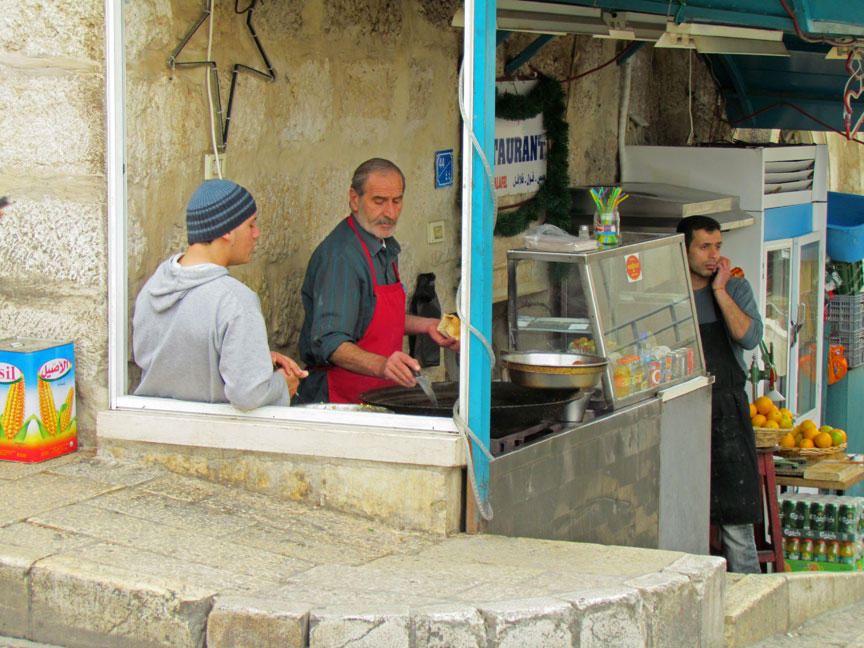
The Mosque of Omar (Umar) was built in 1860 to commemorate the Caliph Umar's visit to Bethlehem upon its capture by the Muslims. It is Bethlehem's only mosque.
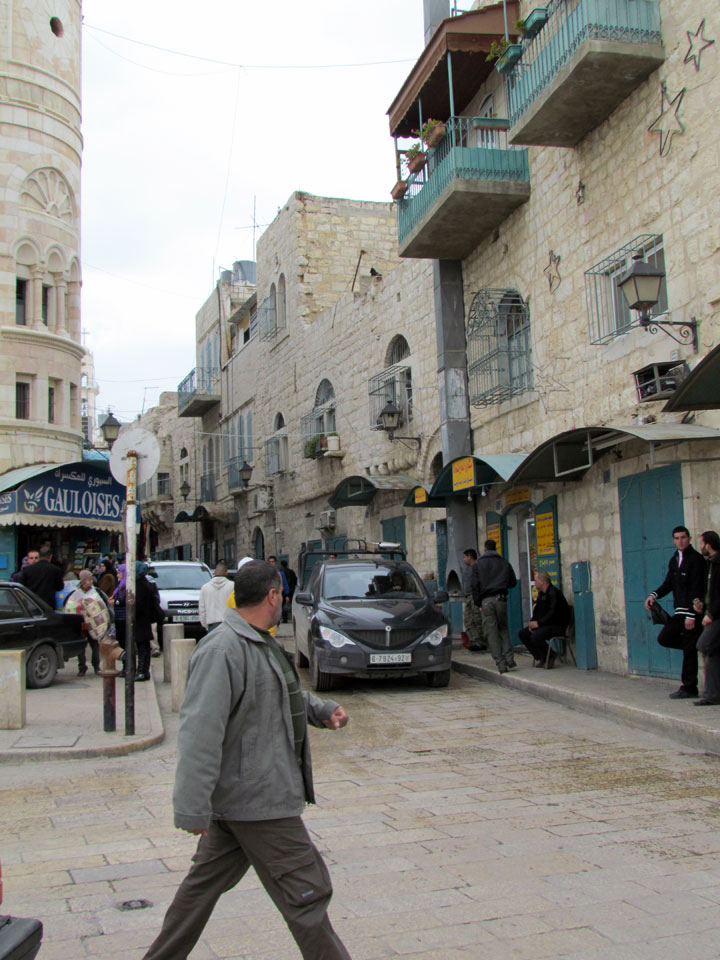
In 637, shortly after Jerusalem was captured by the Muslim armies, 'Umar ibn al-Khattāb,
the second Caliph Bethlehem and promised that the
Church of the Nativity
would
be preserved for Christian use. A mosque dedicated to Umar was built upon the
place in the city where he prayed, next to the church. Bethlehem then passed
from the control of the Islamic caliphates of the Ummayads in the 8th century,
then the Abbasids in the 9th century. Persian geographer recorded in the mid-9th
century that a well preserved and much venerated church existed in the town. In
985, Arab geographer al-Muqaddasi visited Bethlehem, and referred to its church
as the "Basilica of Constantine, the equal of which does not exist anywhere in
the country-round." In 1009, during the reign of the sixth Fatimid Caliph al-Hakim
bi-Amr Allah, the Church of the Nativity was ordered to be demolished, but was
spared by local Muslims, because they had been permitted to worship in the
structure's south transept.

In 1099, Bethlehem was captured by the Crusaders, who fortified it and built a
new monastery and cloister on the north side of the Church of the Nativity. The
Greek Orthodox clergy were removed from their Sees and replaced with Latin
clerics. Up until that point the official Christian presence in the region was
Greek Orthodox. On Christmas Day 1100, Baldwin I, first king of the Frankish
Kingdom of Jerusalem, was crowned in Bethlehem, and that year a Latin episcopate
was also established in the town.
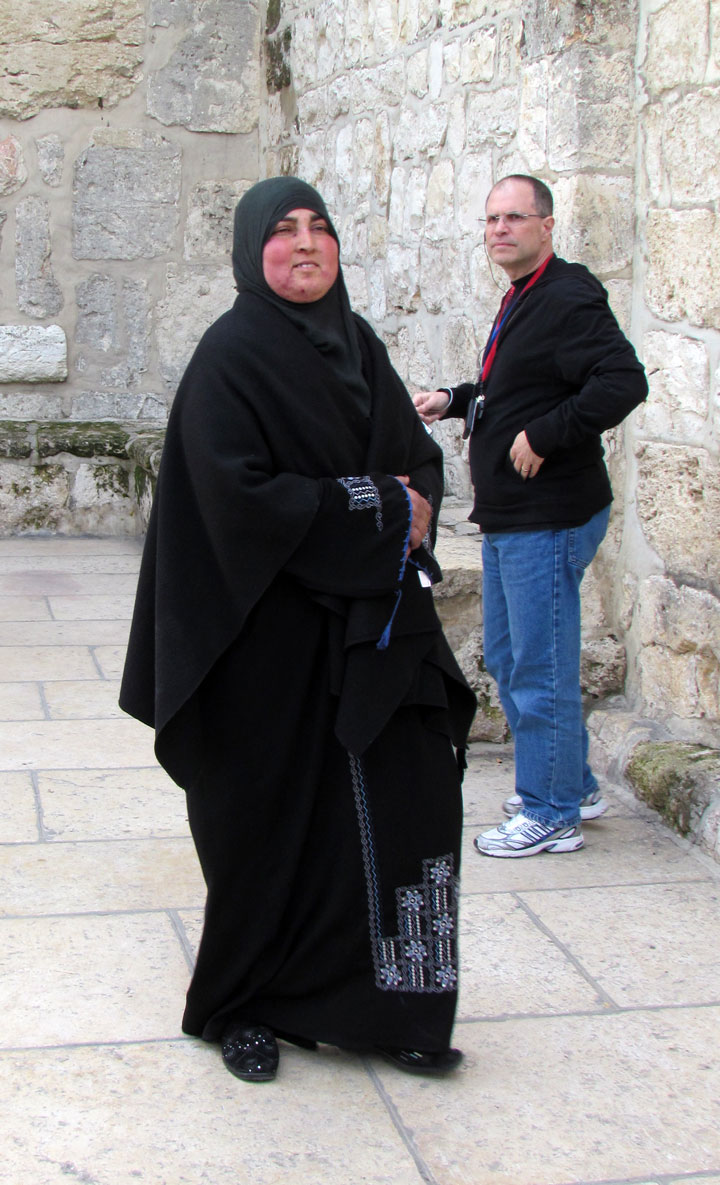
In 1187, Saladin, the Sultan of Egypt and Syria who led the Muslim Ayyubids,
captured Bethlehem from the Crusaders. The Latin clerics were forced to leave,
allowing the Greek Orthodox clergy to return. Saladin agreed to the return of
two Latin priests and two deacons in 1192. However, Bethlehem suffered from the
loss of the pilgrim trade, as there was a sharp decrease of European pilgrims.
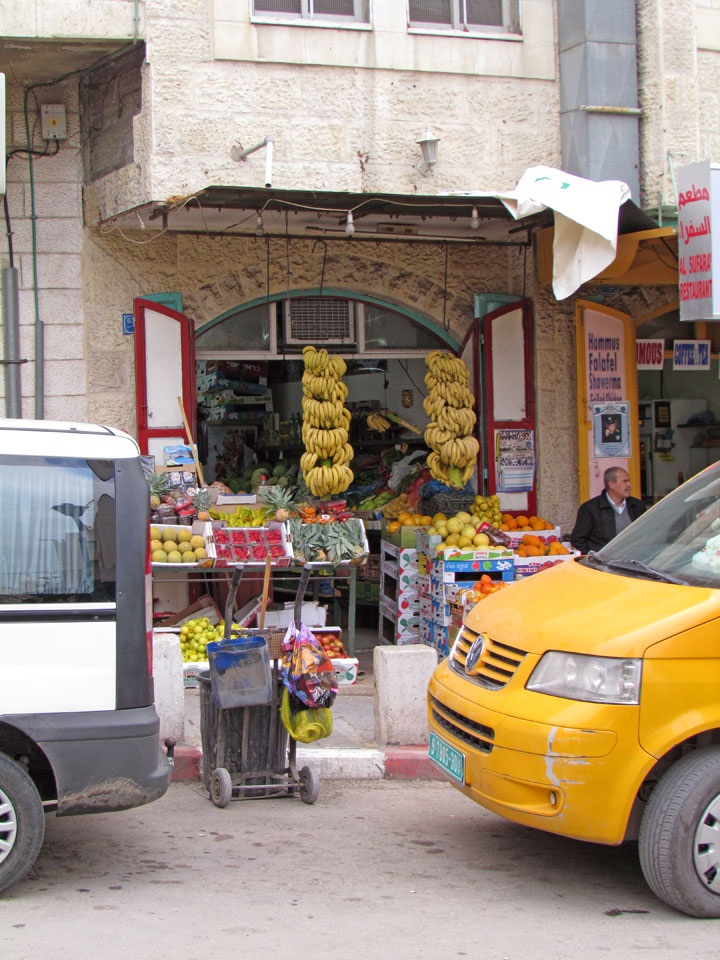
William IV, Count of Nevers had promised the Christian bishops of Bethlehem that
if Bethlehem should fall under Muslim control, he would welcome them in the
small town of Clamecy in present-day Burgundy, France. As such, The Bishop of
Bethlehem duly took up residence in the hospital of Panthenor, Clamecy in 1223.
Clamecy remained the continuous 'in partibus infidelium' seat of the Bishopric
of Bethlehem for almost 600 years, until the French Revolution in 1789.

Christmas tree
Bethlehem—along with Jerusalem, Nazareth and Sidon—was briefly ceded to the
Crusader Kingdom of Jerusalem by a treaty between Holy Roman Emperor Frederick
II and Ayyubid Sultan al-Kamil in 1229, in return for a ten-year truce between
the Ayyubids and the Crusaders. The treaty expired in 1239 and Bethlehem was
recaptured by the Muslims in 1244.
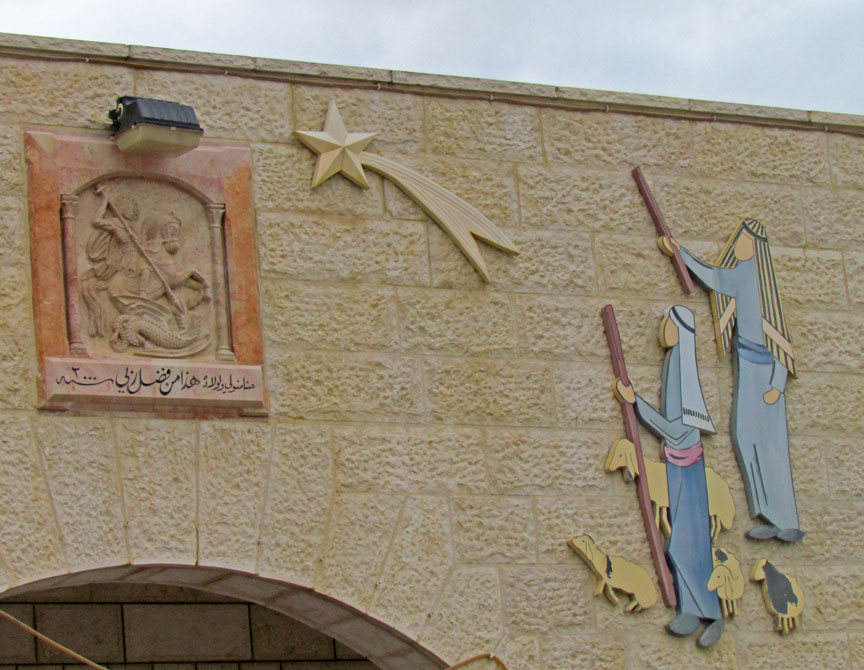
In 1250, with the coming to power of the Mamluks under Rukn al-Din Baibars,
tolerance of Christianity declined; the clergies left the city, and in 1263 the
town walls were demolished. The Latin clergy returned to Bethlehem the following
century, establishing themselves in the monastery adjoining the Basilica of the
Nativity. The Greek Orthodox were given control of the basilica and shared
control of the Milk Grotto with the Latins and the Armenians.
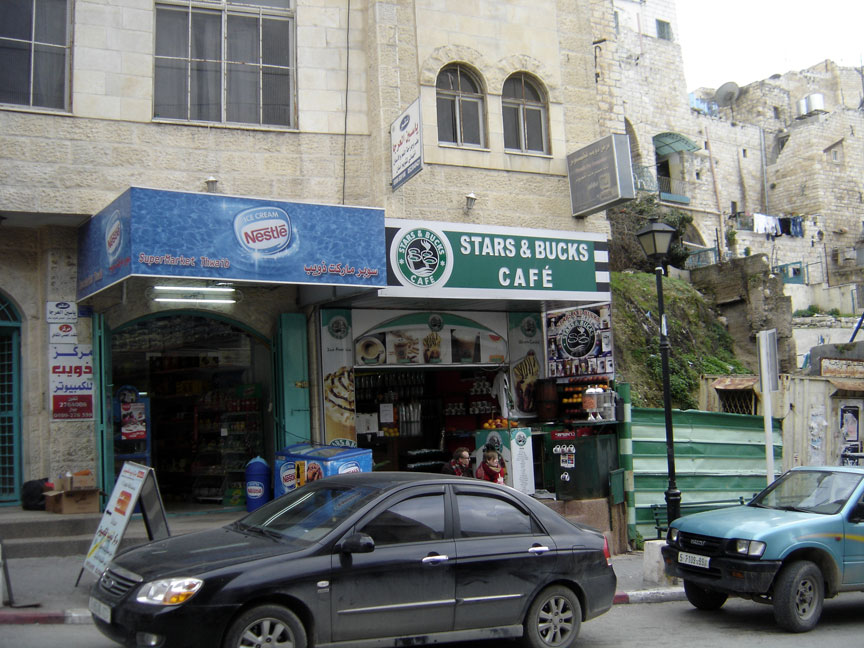
Stars & Bucks Cafe
From 1517, during the years of Ottoman control, custody of the Basilica was bitterly disputed between the Catholic and Greek Orthodox churches. By the end of the 16th century, Bethlehem had become one of the largest villages in the District of Jerusalem, and was subdivided into seven quarters. The Basbus family served as the heads of Bethlehem among other leaders during this period.
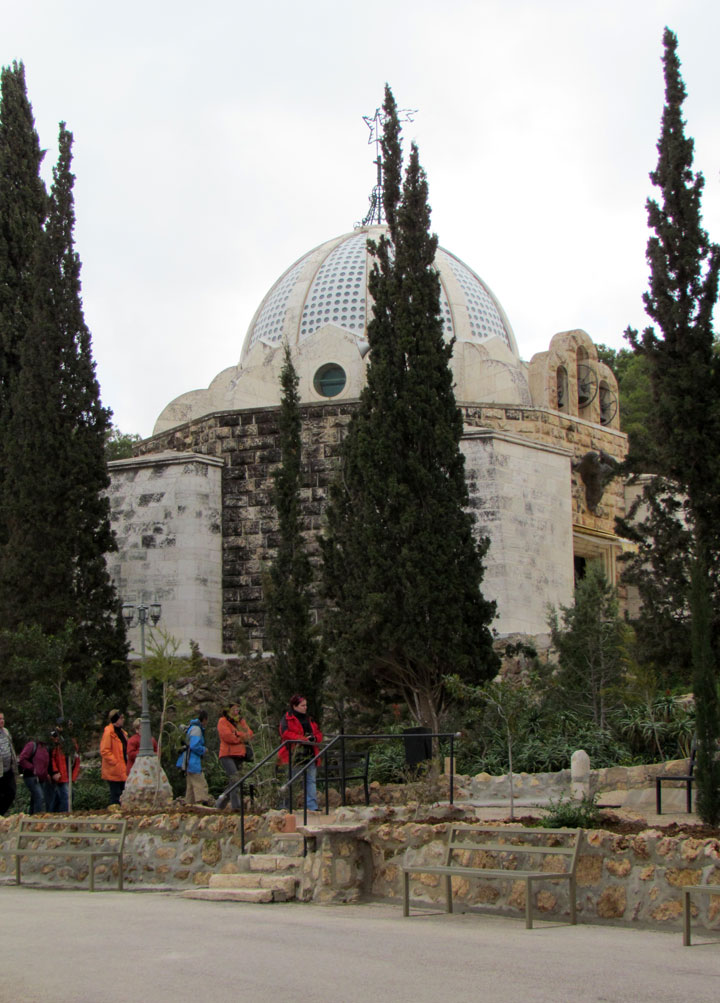
Bethlehem paid taxes on wheat, barley, and grapes. The Muslims and Christians
were organized into separate communities, each having its own leader; five
leaders represented the village in the mid-16th century, three of whom were
Muslims. Ottoman tax records suggest that the Christian population was slightly
more prosperous or grew more grain as opposed to grapes, the former being a more
valuable commodity.
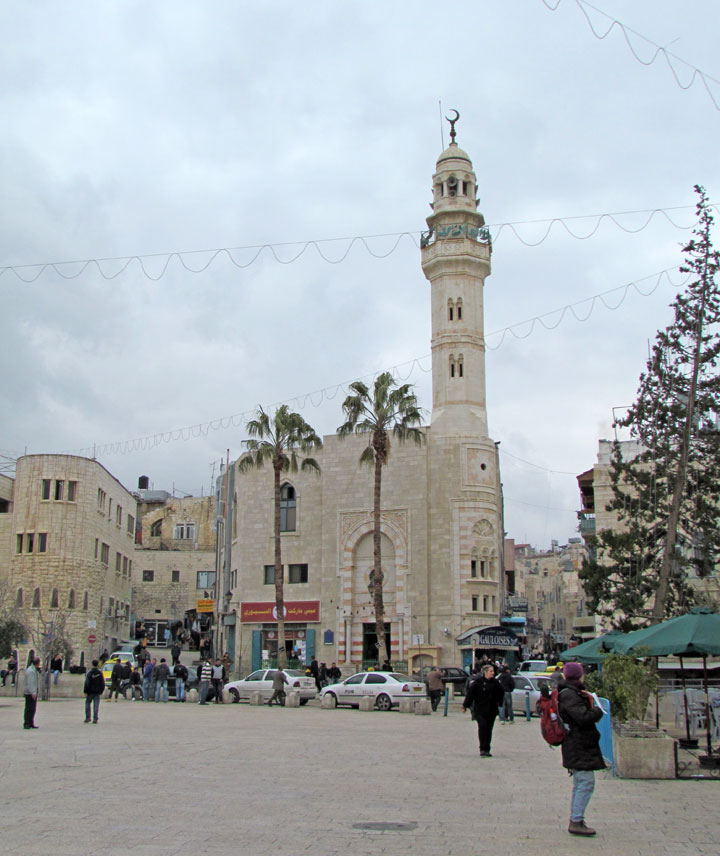
From 1831 to 1841, Palestine was under the rule Muhammad Ali Dynasty of Egypt.
During this period, the town suffered an earthquake as well as the destruction
of the Muslim quarter in 1834 by Egyptian troops, apparently as a reprisal for
the murder of a favored loyalist of Ibrahim Pasha. In 1841, Bethlehem came under
Ottoman rule once more and remained so until the end of the World War I. Under
the Ottomans, Bethlehem's inhabitants faced unemployment, compulsory military
service and heavy taxes, resulting in mass emigration particularly to South
America. An American missionary in the 1850s reports a population of under
4,000, 'nearly all of them belong to the Greek Church.' He also comments that
'there is a fatal lack of water' and hence it could never become a large town.
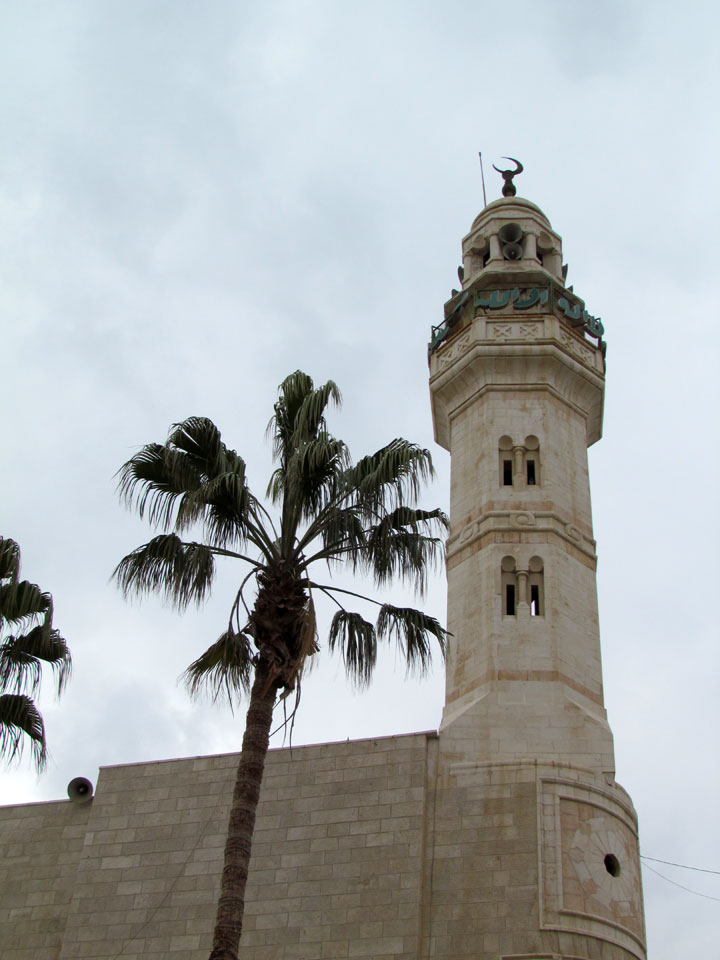
Bethlehem was administered by the British Mandate from 1920 until 1948. In the
United Nations General Assembly's 1947 resolution to partition Palestine,
Bethlehem was included in the special international enclave of Jerusalem to be
administered by the United Nations.
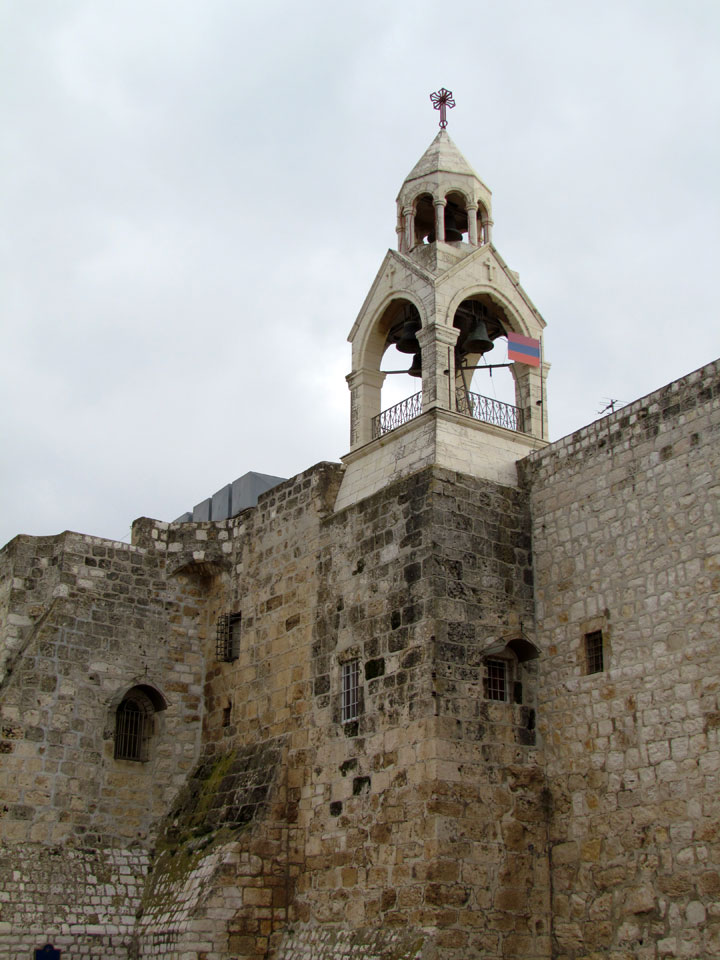
Jordan annexed the city during the 1948 Arab-Israeli War. Many refugees from
areas captured by Israeli forces in 1947–48 fled to the Bethlehem area,
primarily settling in the what became the official refugee camps of 'Azza (Beit
Jibrin) and 'Aida in the north and Dheisheh in the south. The influx of refugees
significantly transformed Bethlehem's Christian majority into a Muslim one.

Jordan retained control of the city until the Six-Day War in 1967, when Bethlehem was occupied by Israel, along with the rest of the West Bank. On December 21, 1995, Israeli troops withdrew from Bethlehem, and three days later the city came under the complete administration and military control of the Palestinian National Authority in conformance with the Interim Agreement on the West Bank and the Gaza Strip in 1995.
Text from Wikipedia
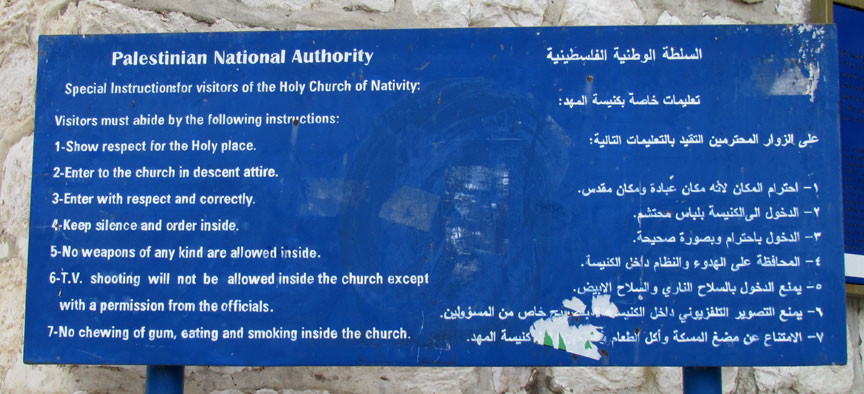
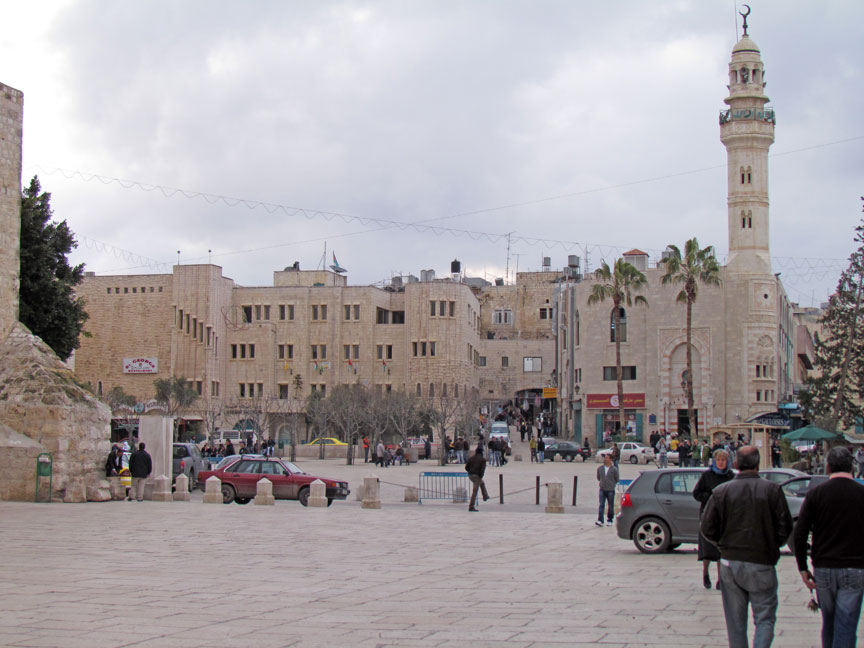
Manger Square

entrance to Church of the Nativity
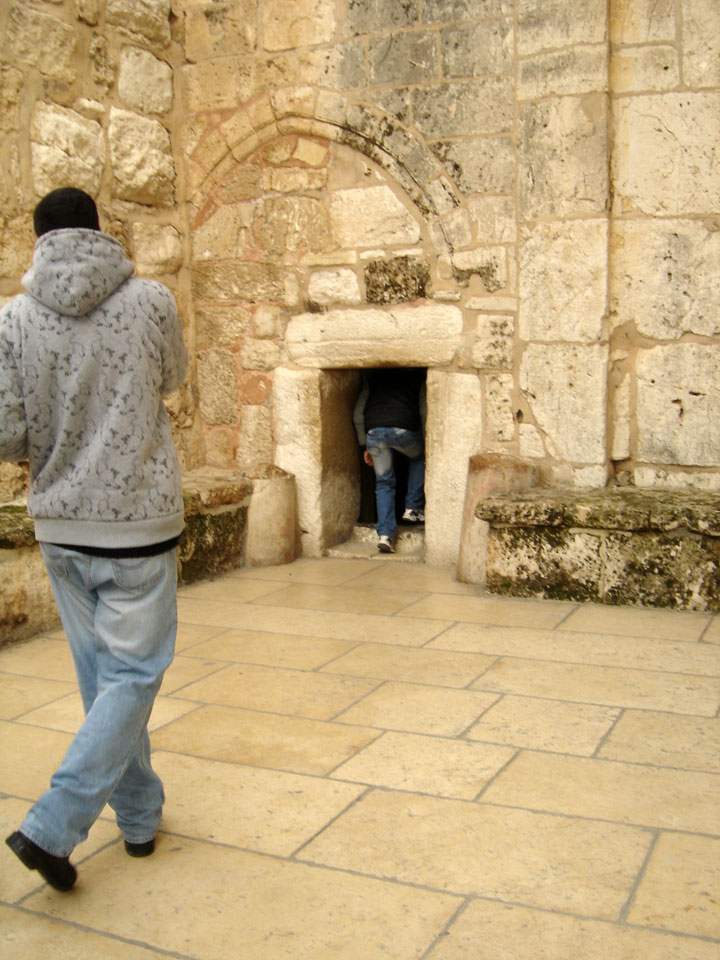
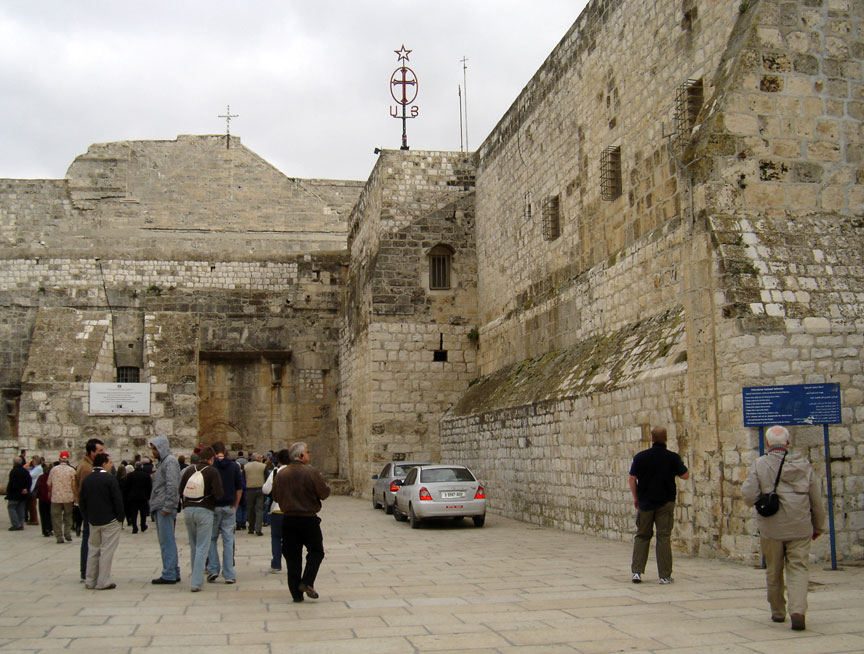
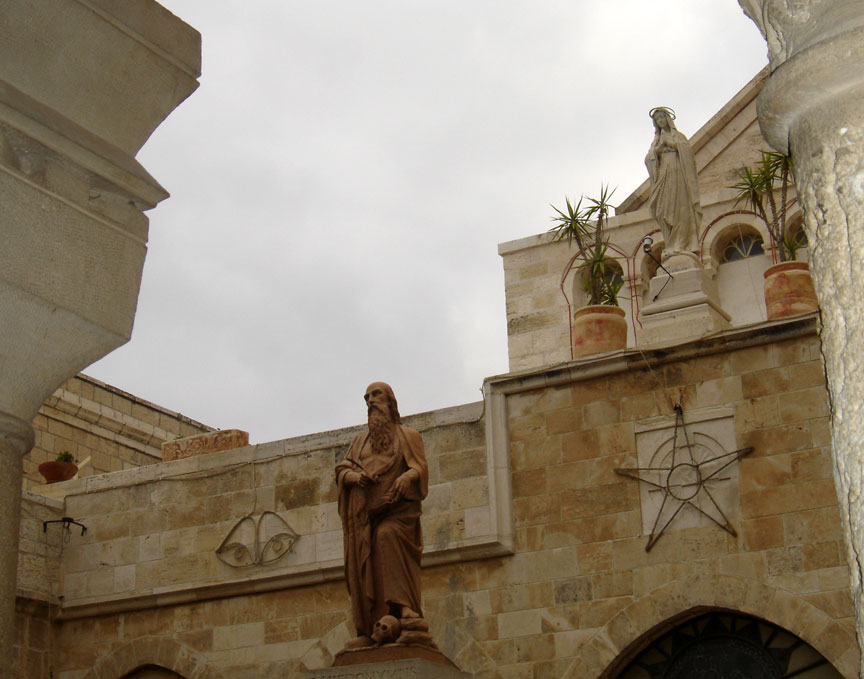
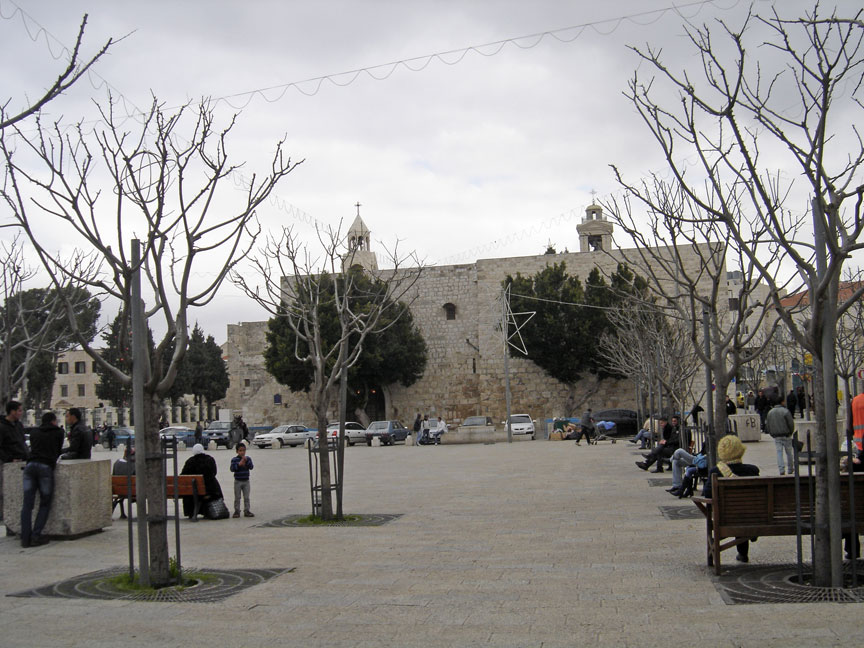
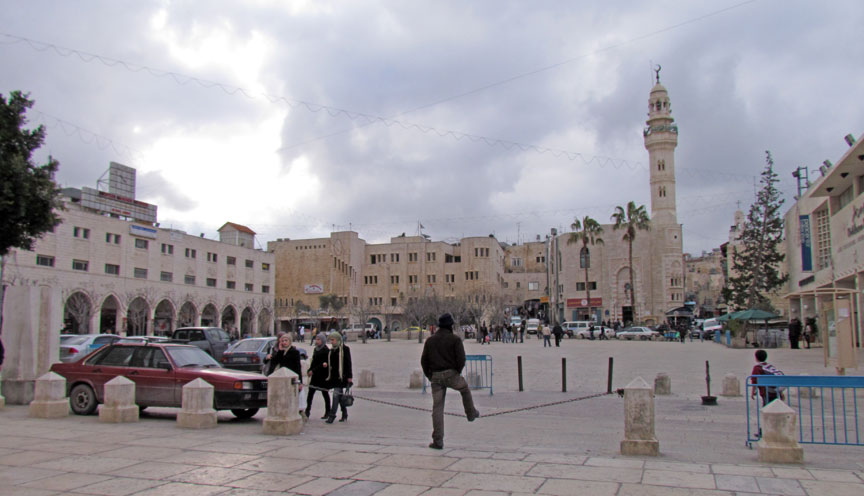
Manger Square
The Shepherd's Field
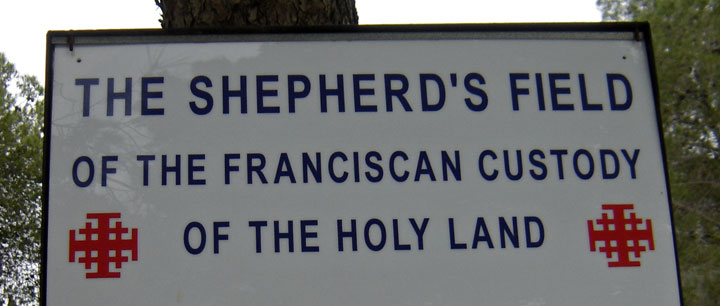
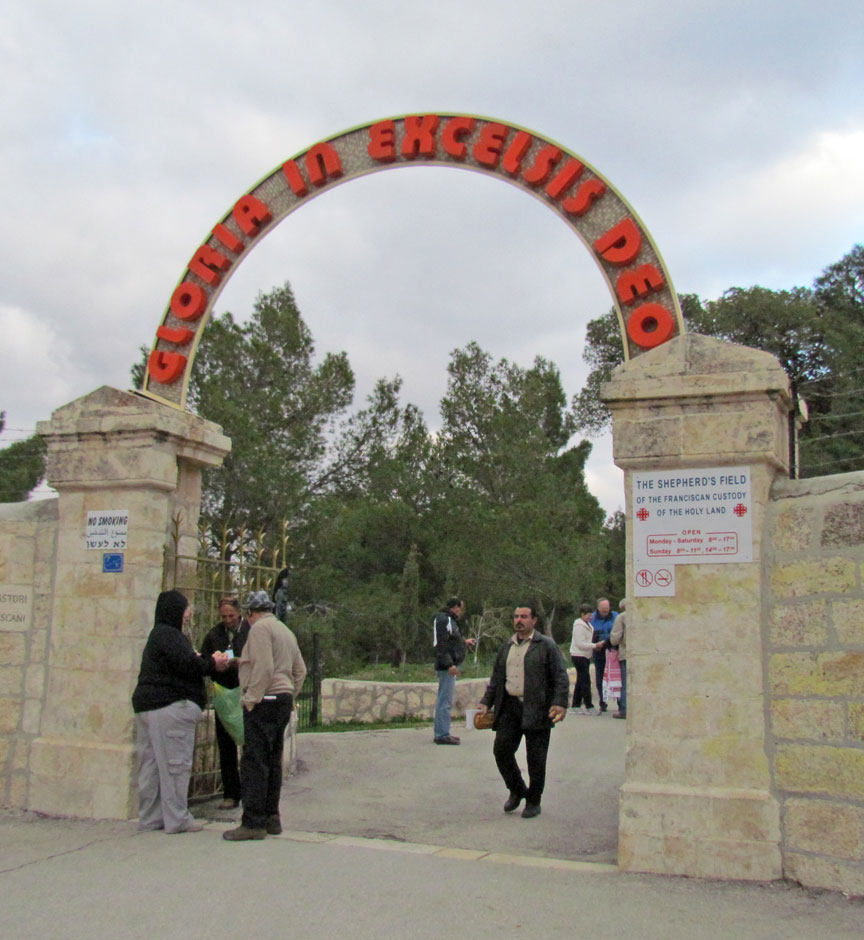
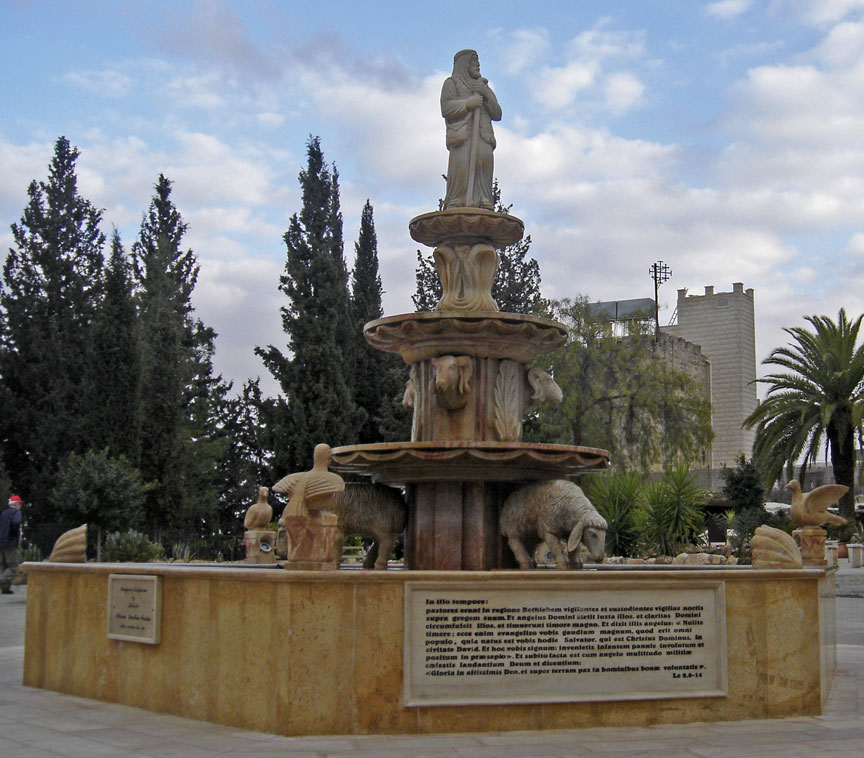
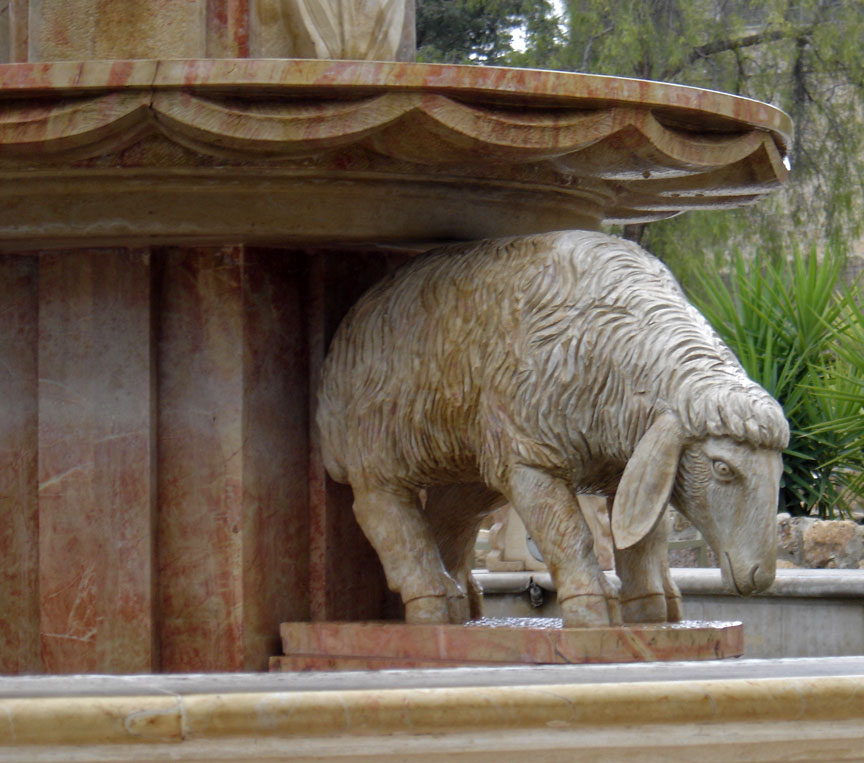
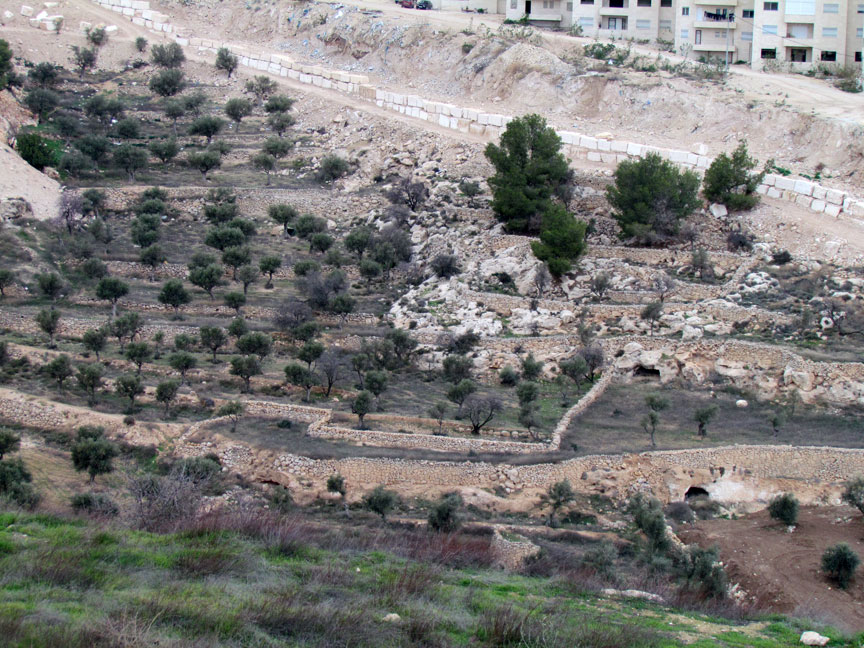
Shepard's Field
